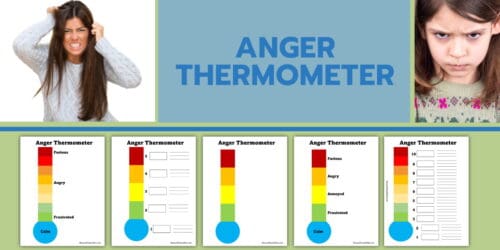Anger Thermometer

What is anger?
Anger is an emotion experienced by the body when we feel hurt. It is the body’s way of trying to protect itself from further harm. We usually react with anger by becoming aggressive towards others or ourselves. This can be physical, verbal, or emotional aggression. Anger is a feeling of having been wronged by someone or something. However, anger can be a blessing in disguise. It can be a way to express negative feelings and motivate you to find solutions to challenges. But too much anger can cause problems.
Anger warning signs
Anger is a normal emotion that all people experience. It can be expressed in many ways, including physical, verbal, and emotional aggression. Physical anger is often expressed through hitting, cursing, or physically attacking someone or something. Verbal anger can also be expressed through swearing or using violent language to describe someone or something. Emotional anger is expressed through bitterness, resentment, disgust, or even self-harm. Even though all three types of anger are not harmful in themselves, they can cause damage to relationships and more serious problems if they are not dealt with appropriately.
What is an anger thermometer?
An anger thermometer is a 10-point scale where “10” means a person is engulfed with maximum anger, and a “1” means no anger at all.
How to use an anger thermometer
An anger meter can be used to measure anger. It also helps people know when to seek professional help for their anger. The thermometer can also help people gain insight into the causes of their anger and find solutions to relieve their anger.
Example: A person who is starting to get upset may act defensively and argumentative, and as their anger rises, they become aggressive, may raise their voice, and use insults. All these symptoms should be recorded with an anger thermometer.
You can also use an anger thermometer to understand your triggers. You should record the triggers on the thermometer based on their intensity. This can be a helpful way to link specific reactions and symptoms with triggers.
Sample anger thermometer exploration questions
Therapists can use the anger thermometer to rate the triggers on a scale of 1-10. They ask their clients to identify specific anger triggers, such as situations, people, or objects that trigger anger. This can help the therapist better understand what causes a client’s anger.
Anger exploration questions can include:
- “Tell me about the time you recorded a 10 on the anger thermometer.”
- “When you are at a 10 on the anger thermometer, what do you tend to do?”
- “What does a person or situation needs to do for you to get to a 10 on the anger thermometer?”
- “How do you feel in your body when your anger rises to this level?”
- “How would a stranger describe you when you are at a 9 on the anger thermometer, and how would you describe yourself?”
- Taking about symptoms, what do you lose as you go up the anger thermometer? For example, maybe you’re talkative at 1 and not at 5!
The therapist can use these questions to explore what triggers the client’s anger and formulate a way to deal with the anger problem. They can then help the client find ways to reduce their anger levels by avoiding triggers and practicing calming techniques.
Anger Meter 1-10
Anger Meter 1-5
Blank Anger Thermometer
The PDF version is typeable and you can type up to 10 fields. This is useful when you want to customize the labels and use terms that do not appear on the ready-made versions.
How to use an anger thermometer for kids
Therapists can also use an anger thermometer with children to help them understand the various levels of anger. Therapists can use the thermometer to rate the child’s anger on a scale of 1-10 or 1-5, after which they can discuss the triggers that led to a specific level of anger.
Example: A therapist uses the thermometer to rate the child’s anger when playing with friends. The child may experience an increase in anger when his friends interrupt him or take away the toy he is playing with. Once the child rates his anger on the thermometer, you can discuss the situation with his therapist. Consequently, the child can learn to avoid triggering situations and how to calm down when he feels angry.
How to print the anger meter
- Select the anger thermometer PDF or image version.
- Download it to your PC.
- Print on paper or cardstock.
- If you want to use it intensively then have it laminated.






Thanks I work with children who have problems with self regulation